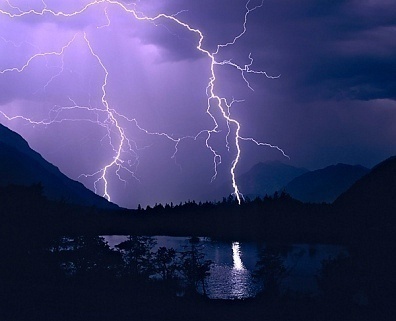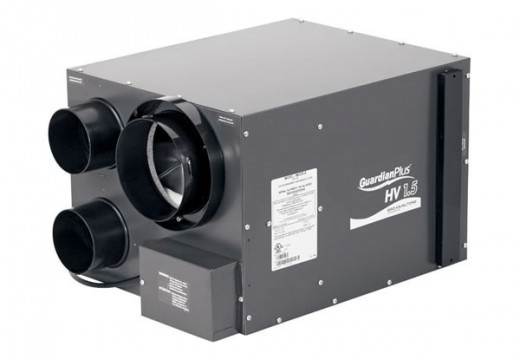Lightning can be described as a massive discharge of electrical energy that can reach the speed of 130,000 mph and can exceed temperatures of 30,000 degrees Celsius. Although we know a lot about this phenomenon, it is still unclear how and why lightning forms. We will mention some of the theories on how lightning is created.
History
In June 1756, Benjamin Franklin attached a silk string to a kite and launched it during a thunderstorm. He then attached the string to a key and tied it to a post. As the storm became stronger, the string became soaked with water and allowed electricity from the clouds to pass along the string. Franklin then moved his hand closer to the key and a spark of lightning jumped from the key to his hand. Although Franklin was not the first to experiment with lightning, his research has improved our overall knowledge of electricity and transfer of energy. Almost 150 years later, Nikola Tesla invented what he called a “Tesla Coil”. He used it to generate high frequency electrical voltage that was then dispersed through the air as artificial lightning.
Discharge
The electrical discharge occurs due to electricity passing within or between clouds and flowing through the area of air called a “discharge channel” that actually causes the positive and negative ions in the air to push away from each other. The continual surge of electricity within this ‘channel’ causes the air to superheat within milliseconds. Once the air is superheated, it rapidly expands, giving off a sonic boom which we call ‘thunder’.
Electrostatic Induction Hypothesis
The Electrostatic Induction Hypothesis suggests that an unknown process causes electrical charges to be separated within clouds. According to this theory, strong winds carry droplets of water high into the clouds where these are cooled to temperatures ranging between -10 and -20 degrees Celsius. The water droplets then make impact with ice crystals and create graupel. A slight positive charge is transferred to the ice crystals while a slight negative charge is transferred to the graupel. Since the ice crystals are lighter than the graupel, the ice crystals are carried even higher into the clouds where they build up a collective positive charge. The graupel is pulled down to the lower parts of the cloud where they build up a collective negative charge. These two forces continue to grow more powerful, and the difference between the positive charges and the negative charges will lead to lightning.
Polarization Mechanism Hypothesis
According to the Polarization Mechanism Hypothesis, rain and ice become electrically polarized as water droplets pass through the Earth’s electric field. The hypothesis also suggests that ice particles become charged through the process outlined in the Electrostatic Induction Hypothesis.
Gurevich’s Runaway Breakdown Theory
Aleksandr Gurevich’s Runaway Breakdown Theory states that cosmic rays cause ionized air molecules in the upper areas of clouds to release electrons that pass along other air molecules in a sporadic, runaway chain. The air then becomes conductive and allows for these cosmic rays to form a lightning bolt.
Re-strike
Re-strike is the phenomenon that occurs as lightning discharges from a cloud. Video evidence shows that lightning is ‘composed’ of several smaller bursts of electricity. The first strike creates the discharge channel and the rest of the bursts follow the initial one. These small bursts create the bright light associated with lightning.
How is Lightning Formed?
Cloud To Ground Lightning
Cloud-to-ground lightning is the most dangerous form of lightning. Cloud-to-ground lightning can occur anywhere and can strike any point. There are four main types of cloud-to-ground lighting: bead lightning, ribbon lightning, staccato lightning, and forked lightning.
Bead Lightning
Bead lightning is a form of cloud-to-ground lightning in which the lightning is broken up into a series of short, powerful bursts of electricity and resembles a string of beads. Scientists are not quite sure about what causes bead lightning but they believe that as lightning cools and dissipates, the wider parts of the bolt cool slower and keep shining while the thinner parts fade away before you can see them.
Ribbon Lightning
Ribbon lightning can be defined as a lightning discharge where wind displaces successive strokes and this results in broadened appearance.
Staccato Lightning
Staccato lightning is the most common type of lightning. Staccato lightning is a quick burst of electricity that usually goes with branching (smaller bolts of lightning “branching” off of the main bolt).
Forked Lightning
Forked lightning is a form of cloud-to-ground lightning that involves branching into smaller bolts. Forked lightning is different from staccato lightning because forked lightning can seem to jump back and forth between the clouds and the ground rather than just one direct strike.
Cloud To Cloud Lightning
In cloud-to-cloud lightning, the lightning bolts never touch the ground. Cloud-to-cloud lightning can’t damage objects located on the ground, but airplanes can be caught in these cloud-to-cloud lightning storms.
Sheet Lightning
Sheet lightning is a form of cloud-to-cloud lightning that poses no threat and can be a spectacular sight to witness.
Heat Lightning
Heat lightning doesn’t actually involve any more heat than other forms of lighting. The name “heat lightning” came from the fact that this type of lightning is common on hot summer nights. The lightning is so far away that the sound generated by the bolt (thunder) fades away before you can hear it.
Upper Atmospheric Lightning
Upper-atmospheric lightning refers to unusually large discharges of electricity above the normal lightning altitude. Upper-atmospheric lightning can exhibit strange shapes and has unusual properties that are not found in other forms of lightning.
Sprites
Sprites are high altitude lightning bolts that occur above thunderclouds. Sprites tend to occur in groups and have many different branches called tendrils.
Blue Jets
Blue Jets are high altitude lightning bolts that travel from the top of thunderclouds to the lower ionosphere. Blue Jets are bluish in color and can travel at amazing speed of 250,000 meters per second.
Elves
Elves are a form of upper-atmospheric lightning that involves discharges from the ionosphere that excite nitrogen molecules in the air above thunderclouds and they create vast, flattened fields of lightning that last for only a millisecond.
Ground To Cloud Lightning
Ground-to-cloud lightning is extremely rare and happens only when negatively charged ions in the ground are pulled towards positively charged ions in thunderclouds. The lightning is then passed back to the ground causing a “return stroke”.
Dry Lightning
Some forms of clouds (known as pyrocumulus) are created when there is extreme heat in the lower atmosphere which causes moisture to condense into a cloud form. These clouds are capable of producing lightning just like other types of clouds.
Positive Lightning
Positive lightning, unlike negative lightning, comes from the top of thunderclouds, travels horizontally, and then dips down towards the Earth to meet up with negative charges.
Ball Lightning
Ball lightning occurs in spherical forms that vary in size. This type of lightning is unpredictable and very rare.




Follow Us!